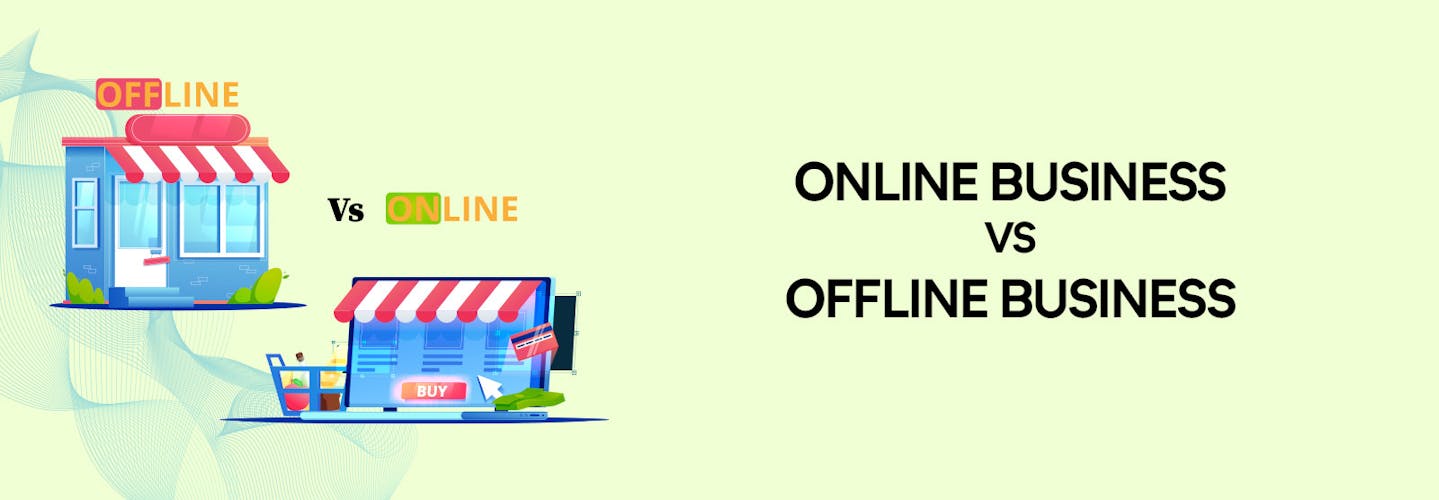
Online Business vs Offline Business: Which Is More Beneficial?
In today’s digital era, the way we conduct business has undergone a profound transformation.
With the advent of the internet, entrepreneurs are faced with a crucial decision: to establish an online presence or stick with traditional brick-and-mortar establishments.
The debate between online and offline business models has ignited a fierce discussion among business owners, economists, and consumers alike.
While both approaches have their own merits, understanding the statistics and trends can provide valuable insights into the ever-evolving landscape of commerce.
Did you know that global ecommerce growth rate for 2025 is forecast at 9.4%, bringing global ecommerce sales worldwide to $5.9 trillion. This marks a 1.8 percentage point increase from 2022’s growth rate, which followed a massive dip from 2021.
But what about traditional, brick-and-mortar businesses? Are they still relevant in today’s digital age?
According to a survey conducted by SCORE, a nonprofit association for small business owners, 72% of consumers still prefer to shop in physical stores, even though online shopping is more convenient and accessible.
So, which is better for starting a business: online or offline? In this post, we’ll compare the pros and cons of each approach, backed by data and insights from experts in the field.
Whether you’re a budding entrepreneur or a seasoned business owner looking to expand your reach, this post will help you make an informed decision about the best path forward.
Importance of Choosing the Right Business Model
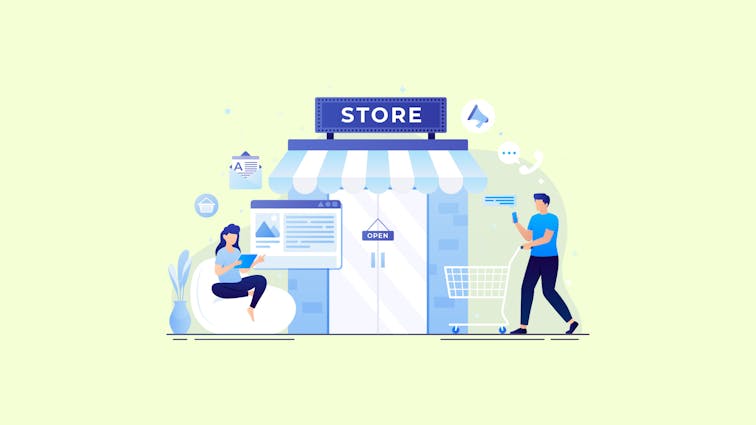
Choosing the right business model is crucial for the success of any business. A business model determines how you generate revenue, how you deliver your products or services, and how you interact with your customers.
It is essential to choose a business model that aligns with your strengths, values, and goals. A good business model should be sustainable, scalable, and profitable in the long run.
Significance of the Online Business vs Offline Business Comparison
The comparison between online and offline businesses is significant because it can help entrepreneurs make informed decisions about the type of business they want to start.
By understanding the pros and cons of each business model, entrepreneurs can choose a model that aligns with their goals and resources.
For example, an entrepreneur with limited capital may choose to start an online business to reduce overhead costs. On the other hand, an entrepreneur who values face-to-face interactions may choose to start an offline business.
Here are some key points to consider when choosing between online and offline business models:
1. Market demand: Research your target market to determine if they prefer online or offline shopping experiences.
2. Startup costs: Consider the costs of starting and running an online or offline business, including website design, inventory, rent, utilities, and staff.
3. Location: Consider the location of your target market and whether an online or offline presence will be more effective.
4. Competitive landscape: Evaluate the competition in your industry and the strengths and weaknesses of their online and offline strategies.
5. Customer experience: Consider the customer experience you want to provide and whether an online or offline model will be better suited for it.
What is online Business?
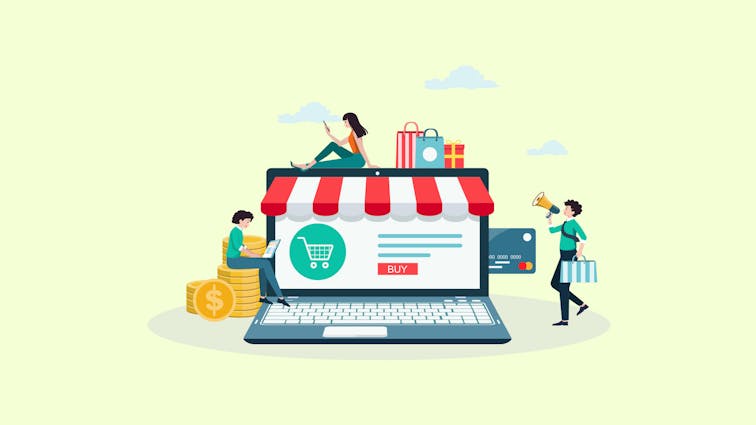
An online business, also known as e-commerce or electronic commerce, refers to any type of commercial activity conducted through the internet.
This can range from selling products and services, to providing information or entertainment. Some key characteristics of online businesses include:
- Utilizing a website or online platform for transactions and interactions with customers.
- Depending on digital marketing strategies to promote products or services.
- Leveraging technology for managing and automating various aspects of the business, such as inventory, order processing, and customer service.
Benefits of Starting an Online Business
Starting an online business can offer numerous advantages over traditional brick-and-mortar establishments. Here are four key benefits:
1. Flexible Work Environment and Schedule
One of the most significant advantages of running an online business is the flexibility it offers.
Entrepreneurs can work from home or any location with a stable internet connection, which eliminates the need for a physical storefront.
Additionally, online businesses often allow for a more flexible work schedule, enabling business owners to balance their professional and personal lives more effectively.
2. Global Reach and Access to a Wider Audience
The internet allows online businesses to reach customers around the globe, breaking down geographical barriers and expanding their potential audience.
This global reach can lead to increased brand visibility and higher sales, as businesses can tap into markets that would have been difficult or impossible to access through traditional means.
3. Lower Startup Costs and Overhead Expenses
Compared to brick-and-mortar businesses, online businesses generally have lower startup costs and ongoing expenses.
There’s no need to invest in a physical storefront, and expenses like utilities and rent can be significantly reduced or eliminated entirely.
Additionally, online businesses can often be scaled more easily, allowing for growth without the need for large capital investments.
4. Data Analytics and Targeted Marketing Opportunities
Online businesses have access to a wealth of data that can be used to optimize marketing strategies and improve customer experiences.
Through the use of data analytics tools, businesses can gain insights into customer behavior, preferences, and demographics.
This information can then be used to create targeted marketing campaigns that resonate with specific audience segments, increasing the likelihood of conversion and ultimately boosting sales.
What is offline Business?
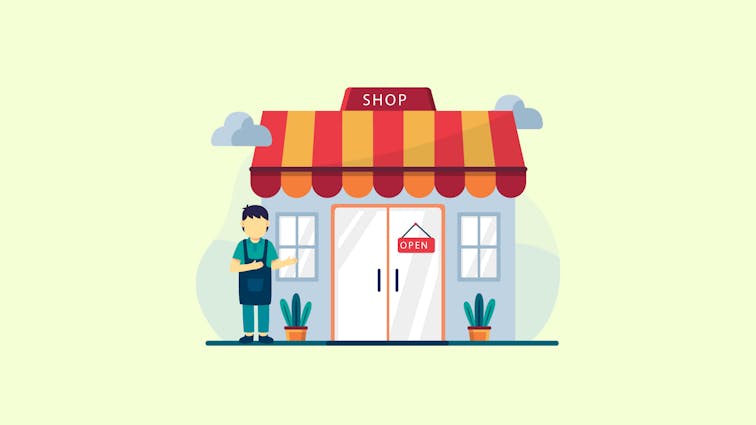
An offline business, also known as a traditional or brick-and-mortar business, refers to a commercial enterprise that operates from a physical location, such as a store, office, or other type of establishment.
These businesses primarily conduct transactions and interactions with customers in person. Some key characteristics of offline businesses include:
- Relying on a physical location to attract and serve customers.
- Depending on traditional marketing strategies, such as print advertising, signage, and word-of-mouth.
- Utilizing in-person interactions for sales, customer service, and other aspects of the business.
Benefits of Starting an Offline Business
While online businesses have gained popularity in recent years, there are still several advantages to starting an offline business. Here are four key benefits:
1. Tangible and Personal Customer Interactions
One of the main advantages of offline businesses is the opportunity for direct, face-to-face interactions with customers.
These personal connections can help build trust, foster long-term relationships, and lead to repeat business.
Additionally, in-person interactions can provide valuable feedback and insights into customer preferences, allowing businesses to better tailor their products and services to meet customer needs.
2. Local Branding and Community Connection
Offline businesses have the opportunity to establish strong local branding and create connections within their community.
By participating in local events, sponsoring community initiatives, and cultivating relationships with other local businesses, offline business owners can create a sense of belonging and support within their area.
This can lead to a loyal customer base and positive word-of-mouth marketing.
3. Greater Control over Operations and Customer Experience
Operating a brick-and-mortar establishment gives business owners more control over their operations and the overall customer experience.
They can ensure that their products and services are presented in the best possible way, and they can directly address any issues or concerns that arise.
This hands-on approach can result in a more consistent and high-quality experience for customers.
4. Instant Gratification and Physical Product Experience
For many consumers, the ability to see, touch, and try products before making a purchase is an important factor in their decision-making process.
Offline businesses can provide this tangible experience, offering customers instant gratification and the reassurance that comes from physically interacting with a product.
This can be particularly beneficial for businesses selling high-value items or products that require a certain level of customization or personalization.
Key Differences between Online and Offline Business
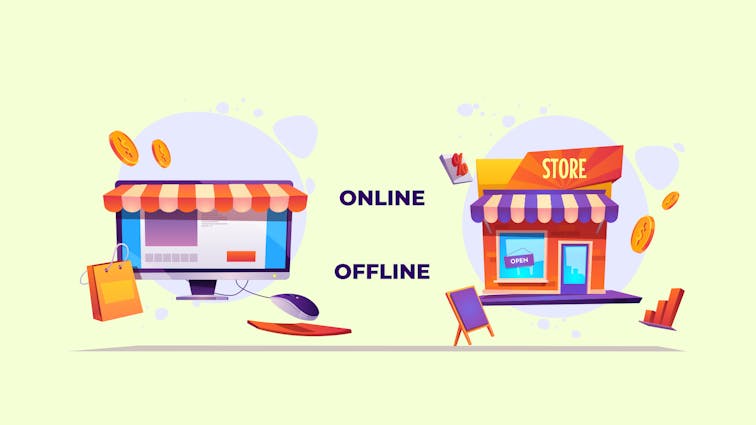
When comparing online and offline businesses, several key differences set the two apart. Here are some of the most notable distinctions between the two types of businesses:
A. Customer Reach and Target Audience
1. Online: Global Reach and Niche Targeting
Online businesses have the potential to reach customers across the globe, making it possible to target niche audiences more effectively.
For example, a specialty tea company based in the United States can sell their products not only to local customers but also to tea enthusiasts in Europe, Asia, or anywhere else in the world.
This global reach allows online businesses to cater to specific interests and demographics that may be underserved in their local market.
2. Offline: Localized Customer Base and Geographical Constraints
Offline businesses primarily serve a local customer base due to their physical location. Geographical constraints can limit the potential audience and make it challenging for brick-and-mortar businesses to reach customers outside their immediate vicinity.
For instance, a boutique clothing store in a small town may have a loyal local following, but its reach would be limited compared to an online store that can sell to customers worldwide.
B. Start-Up Costs and Overhead Expenses
1. Online: Lower Costs, Minimal Infrastructure, and No Physical Storefront
Online businesses generally require lower start-up costs and have minimal infrastructure needs compared to offline businesses.
For example, an online clothing store can operate without a physical storefront, reducing expenses like rent and utilities. Instead, the business may only require a website, payment processing system, and perhaps a small storage space for inventory.
2. Offline: Higher Costs, Physical Storefront, and Inventory Management
Offline businesses typically have higher start-up costs due to the need for a physical location, inventory management, and other operational expenses.
A brick-and-mortar clothing store, for example, would need to invest in a storefront, display fixtures, and point-of-sale systems. Additionally, ongoing expenses such as rent, utilities, and staffing would need to be factored into the operational budget.
C. Marketing and Promotion Strategies
1. Online: Digital Marketing, SEO, Social Media, and Content Creation
Online businesses rely heavily on digital marketing strategies to attract customers and promote their products or services.
This may include search engine optimization (SEO), social media marketing, email marketing, and content creation.
For instance, an online fitness platform might use targeted Facebook ads to reach potential customers, while also regularly posting workout tips and motivational content on Instagram to engage their audience.
2. Offline: Traditional Marketing, Print Ads, Direct Mail, and Local Partnerships
Offline businesses often rely on traditional marketing methods such as print advertising, direct mail campaigns, radio spots, and local partnerships.
For example, a local restaurant might distribute flyers with coupons to nearby neighborhoods, place ads in local newspapers, or partner with nearby businesses to offer cross-promotional deals.
These strategies can help offline businesses build a strong local presence and attract customers from their surrounding area.
D. Customer Interaction and Engagement
1. Online: Virtual Communication, Chatbots, and Online Customer Support
Online businesses utilize virtual communication tools to engage with customers and provide support.
Examples include live chat features on websites, chatbots for automated assistance, and email or social media for customer inquiries.
For example, an online electronics retailer might use chatbots to help customers find the right product or troubleshoot issues, while also offering email support for more complex inquiries.
2. Offline: Face-to-Face Interactions, Personalized Service, and In-Store Experience
Offline businesses have the advantage of face-to-face interactions, which can lead to personalized service and memorable in-store experiences.
For example, a high-end jewelry store might offer personalized consultations to help customers choose the perfect engagement ring, while a local bakery could provide samples of their freshly baked goods to entice customers.
These direct interactions can help offline businesses build strong relationships with their customers and create a lasting impression.
E. Adaptability and Agility
1. Online: Quick Pivoting, Agile Approach, and Digital Transformations
Online businesses have the ability to adapt quickly to market trends, customer demand, and changes in technology.
This agility allows online businesses to pivot their strategies, products, or services much faster compared to offline businesses.
For example, an online fashion retailer can adjust their inventory or sales tactics based on changing trends or seasons, while also staying up-to-date with the latest digital marketing tools and e-commerce platforms.
2. Offline: Slower Pace of Change, Need for Infrastructure Updates, and Dependencies on Physical Resources
Offline businesses often face a slower pace of change and adaptability due to their reliance on physical infrastructure and traditional business practices.
They may have to invest time and resources in updating their storefront, inventory, or marketing strategies, which can slow down the pace of response to market trends or customer preferences.
For example, a brick-and-mortar bookshop may find it challenging to shift their focus to online sales or e-books quickly, as they require updates to their inventory management system, website, and order fulfillment processes.
This slower reaction time can make it more difficult for offline businesses to stay competitive in a rapidly evolving market landscape.
F. Dealing with Challenges and Constraints
1. Online: Cybersecurity Risks, User Privacy, and Reliance on Technology
Online businesses face unique challenges related to cybersecurity threats, user privacy concerns, and overall reliance on technology.
For example, e-commerce sites may be targeted by cybercriminals seeking to steal customer data or disrupt their operations.
As a result, online businesses must invest in robust security measures, stay updated on the latest cybersecurity trends, and put protocols in place to safeguard user privacy.
Additionally, they must maintain reliable technology infrastructure, such as servers and website management tools, to avoid costly downtimes or technical issues.
2. Offline: Location Limitations, Foot Traffic, and Weather Conditions
Offline businesses face challenges related to their physical location, varying levels of foot traffic, and weather conditions that can impact customer attendance.
For instance, a brick-and-mortar store located in a less-populated area may struggle to attract customers and require greater marketing efforts to draw them in.
Additionally, businesses may face challenges in adapting to fluctuations in foot traffic due to seasonal changes, local events, or general market trends.
Weather conditions, such as extreme heat, cold, or storms, can also affect the number of customers visiting offline establishments, making it crucial to prepare for these variations and develop contingency plans for mitigating their effects.
G. Growth Strategies
1. Online: Scaling Up, Expanding into New Markets, and Diversification
Online businesses have ample opportunities for growth by expanding their customer reach, catering to new markets, and diversifying their offerings.
With easy access to global audiences, an online business can tap into different geographical regions, tailor its marketing efforts to target specific demographics, or introduce new products or services with minimal infrastructural updates.
For example, an e-commerce platform specializing in eco-friendly products could scale up by offering international shipping, targeting environmentally-conscious consumers worldwide, or partnering with more sustainable brands to expand their product range.
2. Offline: Strategic Location Expansion, Niche Markets, and Diversifying Products or Services
Offline businesses can also pursue growth strategies by expanding their physical presence to additional locations, targeting niche markets, and diversifying their products or services.
Expanding to strategic locations requires careful market research and analysis to identify areas with high demand and a suitable customer base.
For instance, a successful organic grocery store might open a new branch in an eco-conscious neighborhood, ensuring an interested clientele in the new location.
To target niche markets, offline businesses could specialize in unique products, services, or experiences that cater to a specific audience, such as a vintage boutique offering exclusive clothing items or a board game cafe offering a vast game selection and expert guidance for enthusiasts.
Diversifying products or services can also help offline businesses grow by appealing to a broader customer base and increasing their revenue streams.
For example, a family-owned restaurant could expand their menu to include vegetarian and vegan options, catering to diverse dietary preferences and attracting new patrons.
H. Customer Loyalty and Retention
1. Online: Personalization, Loyalty Programs, and Responsive User Support
Online businesses can foster customer loyalty and retention by offering personalized user experiences, attractive loyalty programs, and responsive support.
Personalization can be accomplished through user-tailored product recommendations, exclusive promotions, or customized communication based on customers’ preferences and past interactions.
Implementing an engaging loyalty program that rewards customers for repeat purchases, referrals, or other beneficial actions can also encourage their continued patronage.
Moreover, providing responsive, empathetic user support through multiple channels, such as emails, live chat, or social media, can significantly enhance customer satisfaction and brand loyalty.
2. Offline: Exceptional In-Store Experiences, Reward Programs, and Attentive Customer Service
Offline businesses can cultivate customer loyalty and retention through memorable in-store experiences, enticing reward programs, and attentive customer service.
Focusing on the atmosphere, visual displays, and overall aesthetics of a physical location creates a welcoming environment that encourages customers to return.
Also, offering a well-designed reward program with exclusive benefits and incentives, such as discounts, free items, or special events, can motivate patrons to make repeat visits and spread positive word-of-mouth referrals.
Lastly, providing attentive, personalized customer service by knowledgeable and friendly staff members can not only meet but exceed customer expectations, ultimately fostering loyalty and long-term relationships.
Case Studies: Successful Online and Offline Businesses
A. Online Business Case Study:
1. Company: Warby Parker Industry: Eyewear
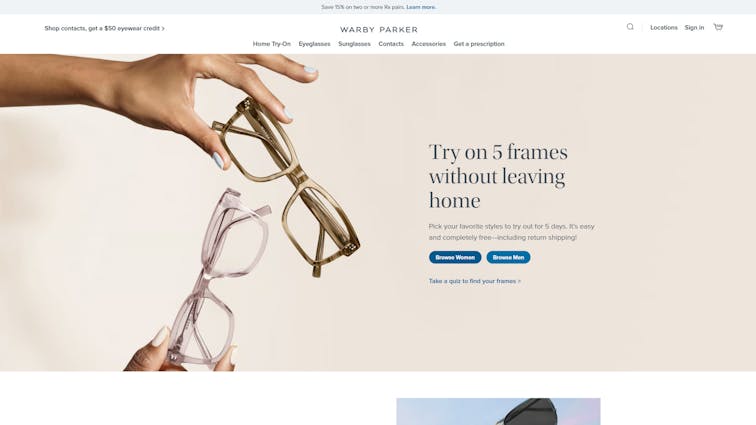
Warby Parker is an American online retailer of prescription eyeglasses and sunglasses. Launched in 2010, the company was founded with the mission to provide affordable, high-quality, and stylish eyewear through an e-commerce platform.
By designing glasses in-house and engaging directly with customers, Warby Parker has been able to significantly reduce costs compared to traditional eyewear retailers.
2. Business Model and Strategies for Success
Warby Parker’s success can be attributed to several key strategies:
a. Online Direct-to-Consumer Model: By selling directly to consumers online, Warby Parker eliminates the middleman and reduces overhead costs, allowing the company to offer premium eyewear at affordable prices.
b. Home Try-On Program: To address the challenge of customers being unable to try on glasses before purchasing, Warby Parker developed a Home Try-On program that allows customers to select five frames to try on at home for free before making a purchase decision.
c. Social Responsibility: Warby Parker’s “Buy a Pair, Give a Pair” program donates a pair of glasses to someone in need for every pair sold, reinforcing the company’s commitment to social responsibility and attracting ethically-minded consumers.
d. Expansion to Physical Stores: Recognizing the continued value of offline experiences, Warby Parker has expanded into brick-and-mortar locations, providing customers with additional touchpoints and shopping options.
3. Key Challenges and Lessons Learned
Warby Parker faced challenges in overcoming customer skepticism about purchasing eyewear online and navigating the complex regulatory landscape of the eyewear industry.
By addressing these challenges through innovative solutions like the Home Try-On program and engaging in constant iteration, Warby Parker has demonstrated the power of combining an online business model with a customer-centric approach.
B. Offline Business Case Study
1. Company: Lush Cosmetics Industry: Personal Care and Beauty
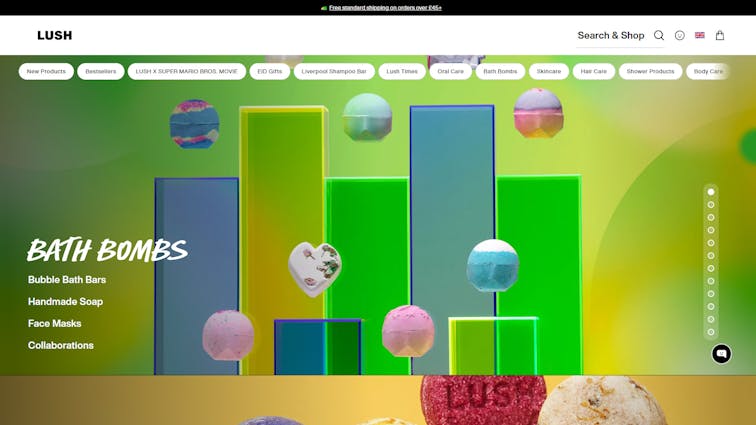
Lush Cosmetics, founded in 1995 in the United Kingdom, is a global retailer of fresh, handmade cosmetics, including bath products, skincare, and haircare. The company is known for its commitment to ethical sourcing, environmental sustainability, and cruelty-free practices.
2. Business Model and Strategies for Success
Lush Cosmetics’ success is rooted in several key strategies:
a. Unique In-Store Experience: Lush stores are designed to engage all the senses, with colorful displays, enticing scents, and interactive demonstrations, creating a memorable and enjoyable shopping experience.
b. Product Innovation: Lush consistently introduces new and innovative products, such as “naked” packaging-free products, which cater to consumers’ growing desire for environmentally-friendly options.
c. Ethical and Sustainable Practices: Lush’s commitment to ethical sourcing, cruelty-free production, and minimal packaging resonates with socially and environmentally-conscious consumers, who often become loyal brand advocates.
d. Community Engagement: Lush actively participates in local communities, hosting events and workshops that help build strong connections with customers and promote brand awareness.
3. Key Challenges and Lessons Learned
Lush Cosmetics has faced challenges in scaling its handmade production model and maintaining consistency across its global locations.
The company has addressed these issues by investing in employee training, fostering a strong company culture, and focusing on continuous improvement.
Lush’s success demonstrates the value of a unique, customer-centric offline business model that prioritizes sustainability and community engagement.
Conclusion:
Online and offline businesses both present unique opportunities, benefits , and challenges. Choosing the right business model greatly depends on the specific goals, target audience, products or services, personal preferences, and financial resources of an entrepreneur.
While online businesses offer scalability, global reach, and low overhead costs, they may face increased competition and a lack of personal connections with customers.
Offline businesses, on the other hand, value the importance of face-to-face interactions, local branding, and tangible product experiences, but may have limited growth potential due to location constraints and higher operational costs.
Considering these differences, aspiring business owners can identify which model best suits their needs, aligns with their strengths, and helps them achieve their short- and long-term objectives.








